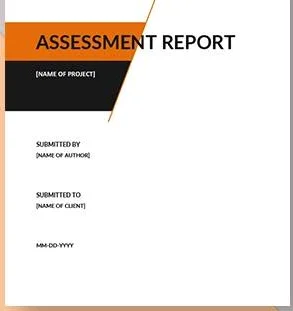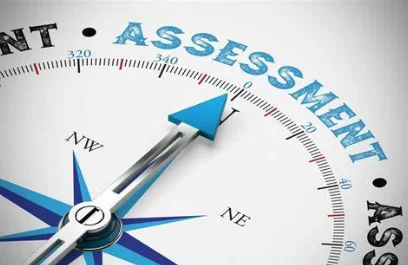Guide How to Write a Nursing Assessment Report Homework

As a nursing student, have you ever been given homework to write a nursing assessment report and got stuck? Have you ever thought that the task is too much and relates to professional nursing tasks, yet you are a student?
Well, in this post, we will try to explain in a step-by-step guide how to write a report and get a good grade from it. But first, what is a nursing report?
Definition of a Nursing Assessment Report

In simple terms, a nursing assessment is a search for information concerning a person’s health status, including their psychological, physiological, spiritual, and sociological well-being.
As a critical component of the nursing process, it is good to learn how to write a nursing assessment report, especially for student nurses.
The evaluation is the first step in planning and providing patient care. It is used to identify patient care requirements and integrates the knowledge of ordinary and abnormal physiology.
At times, the nursing assessment may be quite broad in scope. So, parts of the evaluation, such as the EKGs and vitals, can be delegated to certified nursing techs or assistants.
In other cases, it may only involve mental health or one body system.
Need a Nursing Essay Done for you?
Let us help you get that A in your next nursing assignment. Place your order today, and you will enjoy the benefits.
How to Write a Nursing Assessment Report: A Step by step Guide
A nurse requires skills such as critical thinking and quick recognition of essential changes to identify and prioritize the proper interventions.
Some health facilities have an assessment format to be used in specific circumstances. The following are comprehensive steps to write a nursing assessment report.
1. Collect Information
Assemble the information from all sources, including health assessment, discussions with the patient and their family, clinical observations, report sheet, chart notes and review, and conversations with the health care team.
Start by conducting an initial nursing assessment which includes documenting the following:

- Community support
- Safe plan of discharge
- Evaluating response to health care
- Once admitted, the assessment and reassessment
- The proper level of care to cater to the patient’s needs
You should also complete the following:
- The admission history and physical evaluation of a new inpatient or changed status to an inpatient
- The Nursing Admission Assessment Sheet
- All additional data collected
- Documentation and signature, either written or electronic
2. Determine which Assessment you will write
Basically, you can carry two types of nursing assessments depending on the end result you want to achieve. Let’s look at each of them in detail.
1. Health Assessment
This assessment seeks to identify the patient’s problem. A health assessment is usually a structured screening and evaluation tool deployed in primary health care practices to help the patient and the medical professional to develop a care plan.
The care plan establishes a patient’s needs and identifies how the skilled nursing facility or the healthcare system can meet the requirements. The health assessment information also gives the healthcare team a better understanding of the needs of the overall patient population.
Use your clinical judgment to decide on the level of the physical examination necessary. The primary assessment may involve the investigation of the patient’s airway, breathing pattern, circulation, and any disability. Detailed physical exams will extend to the focused systems assessment.
2. Focused Assessment
Here, you conduct a focused evaluation which may involve the comprehensive examination of any or all of the following body systems; the cardiovascular system, the neurological system, the respiratory system, the gastrointestinal system, the renal system, the musculoskeletal system, the skin, the head including the eyes, ears, nose, and throat.

A focused assessment may also involve a psychological examination. It covers the patient’s mental and emotional health and may include their perceptions, religion, and beliefs.
A psychological exam also includes a physical health assessment to rule out structural anomalies or damage.
A focused assessment can include a cultural examination. It will identify any cultural elements that could facilitate or impede the execution of a nursing diagnosis.
These elements have a significant effect on nursing assessment.
Focused assessment may also involve examining the patient’s experience of pain and integument, i.e., the state of the patient’s hair, nail, and lesions.
3. Analyze the Patient’s Information
Review the information to establish patient trouble areas and identify ways to help improve the situation. Write the general problems, how to help improve, and assess progress.
Therefore, data analysis also includes the use of information in formulating a proper nursing care plan.
An excellent way to achieve this is by using nursing diagnoses to plan and analyze patient outcomes and associated nursing interventions.
4. Comment on your Sources of Information
Consider how you became aware of the patient’s problems. The patient is the primary source of valid data. Secondary sources include family, medical records, and healthcare professionals.
Examine each source and decide if it is subject or objective.
Sources of subjective data include;
- Biographical information
- Patient expectations
- Illness or health concerns
- Spiritual health
- Reasons for seeking healthcare
- Health, psychosocial, environmental, and family history
- Dietary restrictions, history of allergies, and relevant medical history.
Sources of objective data include physical examination;
- An evaluation of all body systems in a systematic manner
- Records of vital signs
- Other actual measurements, such as height, weight, blood sugar level, the circumference of the head, etc.

5. Decide on the Patient’s Issues
Decide what the patient’s issues relate to, and write down your reasons and your suggested interventions.
- Translate
Read the textbooks and official terms for the problems and write them down. Check the outcomes and interventions that may relate to what you wrote.
- Transcribe
Fill in the official template and create your nursing diagnosis. Write down your interventions and evaluation.
Check out how to write a good nursing term paper for more.
FAQs on writing Nursing Assessment
What is a Focused Assessment of Nursing?
It is the detailed nursing assessment of a specific body system or body systems related to health problems or concerns.
Nurses must use their clinical judgment to determine which sections of a focused assessment are relevant for a specific patient.
What is an Initial Nursing Assessment?
This is the beginning step in the nursing process. It requires the orderly and continuous gathering of data. It includes organizing, evaluating, documenting, and communicating of the data.
The initial assessment establishes the examination boundaries and duties necessary to plan and provide personalized care to a patient.
What is Included in a Health Assessment?
The health assessment is often the initial step in identifying the patient’s problem. It is a set of questions that cover the patient’s overall health, personal behaviors, risks, health goals and priorities, and life-changing events.
Health assessment examines the patient’s condition by conducting a physical evaluation after obtaining a patient’s history.
What are the two Components of a Nursing Assessment?
A nursing assessment has two components: a systematic collection of subjective data and an objective data evaluation.
The first element deals with the information provided by the patient in response to a series of questions asked by the nurse. The second is what the nurse observes through examining and taking the patient’s health history.
What are the Four Techniques used in the Physical Assessment?
A nursing assessment encompasses a structured physical examination that enables the nurse to complete the patient’s evaluation. It measures or observes symptoms or signs a patient exhibits or experiences, such as vertigo and nausea.
Physical examination employs four techniques: inspection or observation, percussion, palpation, and auscultation. Besides, the assessment will cover the patient’s blood pressure, temperature, pulse, and respiratory rate.
What are the Nursing Assessment Tools and Techniques?
There is a range of nursing assessment instruments and tools. They help nurses in performing their assessment duties. Nursing assessment tools include;
- The Crighton Royal behavior rating scale
- The general health questionnaire
- The Clifton assessment procedures for the elderly
- The Barthel index
- The geriatric mental health state schedule
- The index of independence in activities of daily living
- Other tools may deal with a particular element of the patient’s care. Also, there is medical equipment for conducting a nursing assessment.
What is the Role of the Nurse in Health Assessment?
Whether ADN or BSN, nurses play a central role in health assessments. They conduct health assessments in various settings, including hospitals, schools, health fairs, and the community.
During the health assessments, nurses can gather Information, formulate nursing diagnoses and care planning, manage the patient’s problems, evaluate a patient’s health status, advocate for the patient, and impart discharge teaching.
Got an assessment homework?
Let us help you get that A in your next assignment. Place your order today, and you will enjoy the benefits.
Watch and learn more about head-to-toe nursing assessment

With over 10 years in academia and academic assistance, Alicia Smart is the epitome of excellence in the writing industry. She is our managing editor and is in charge of the writing operations at Grade Bees.





